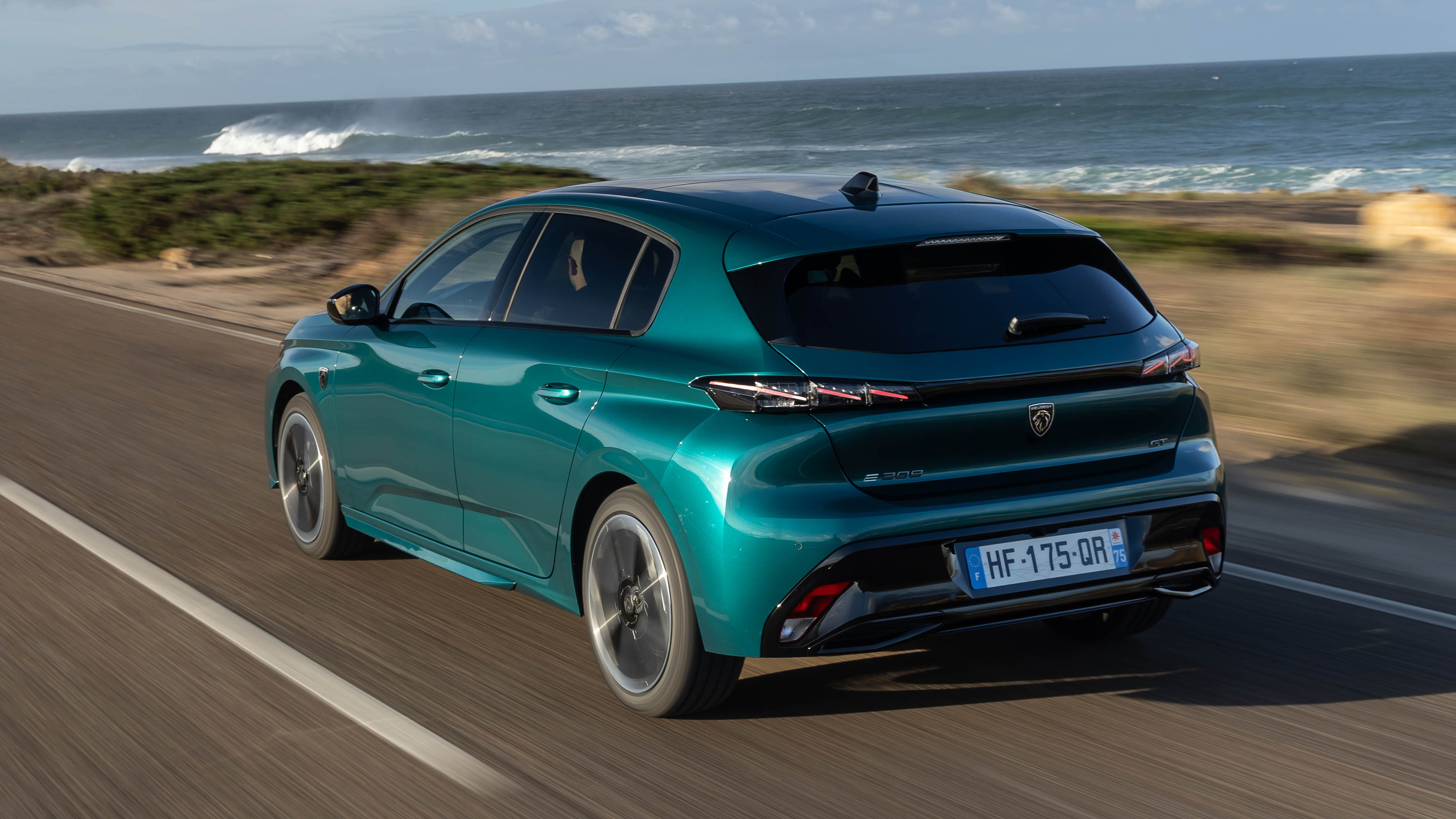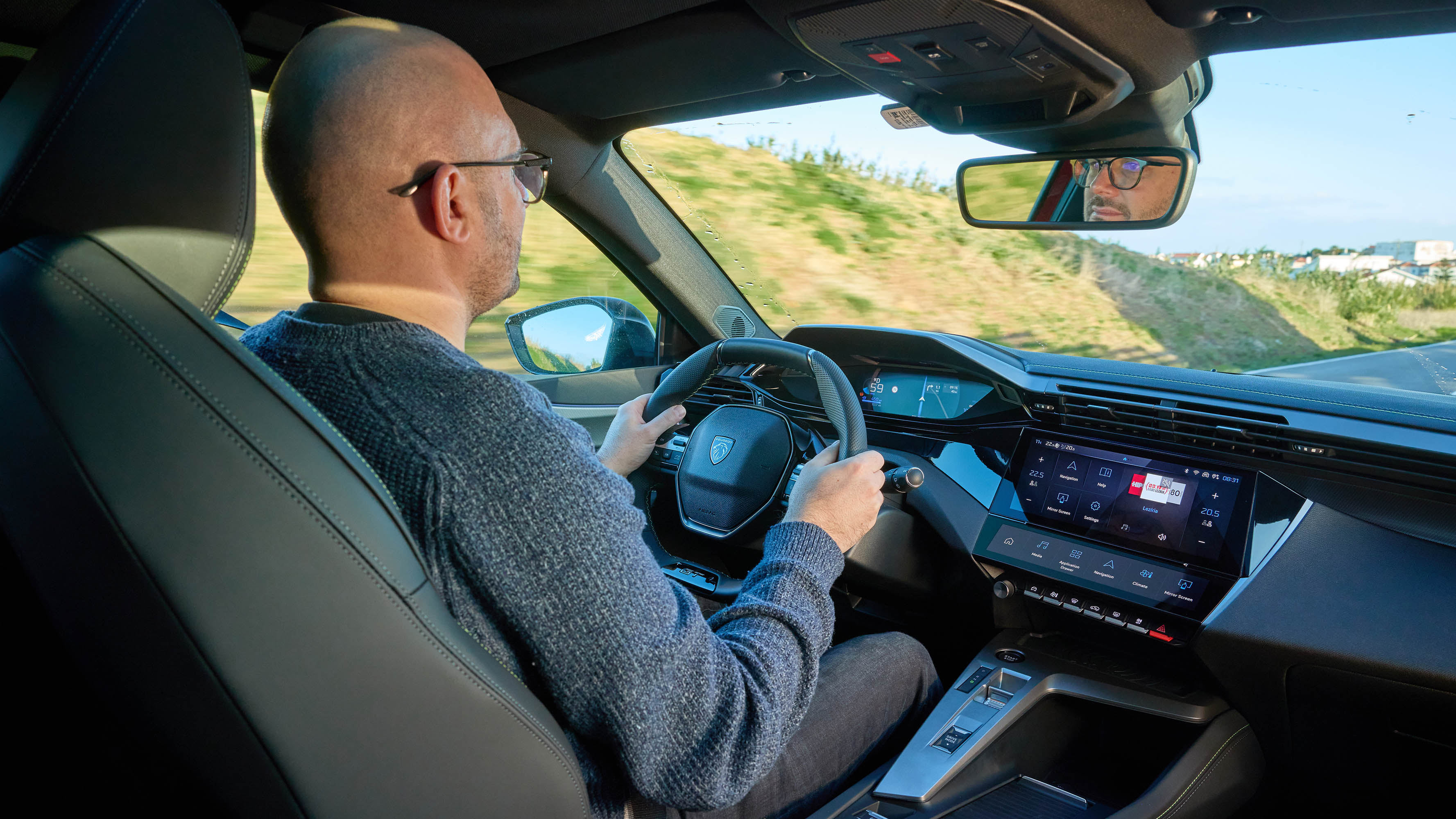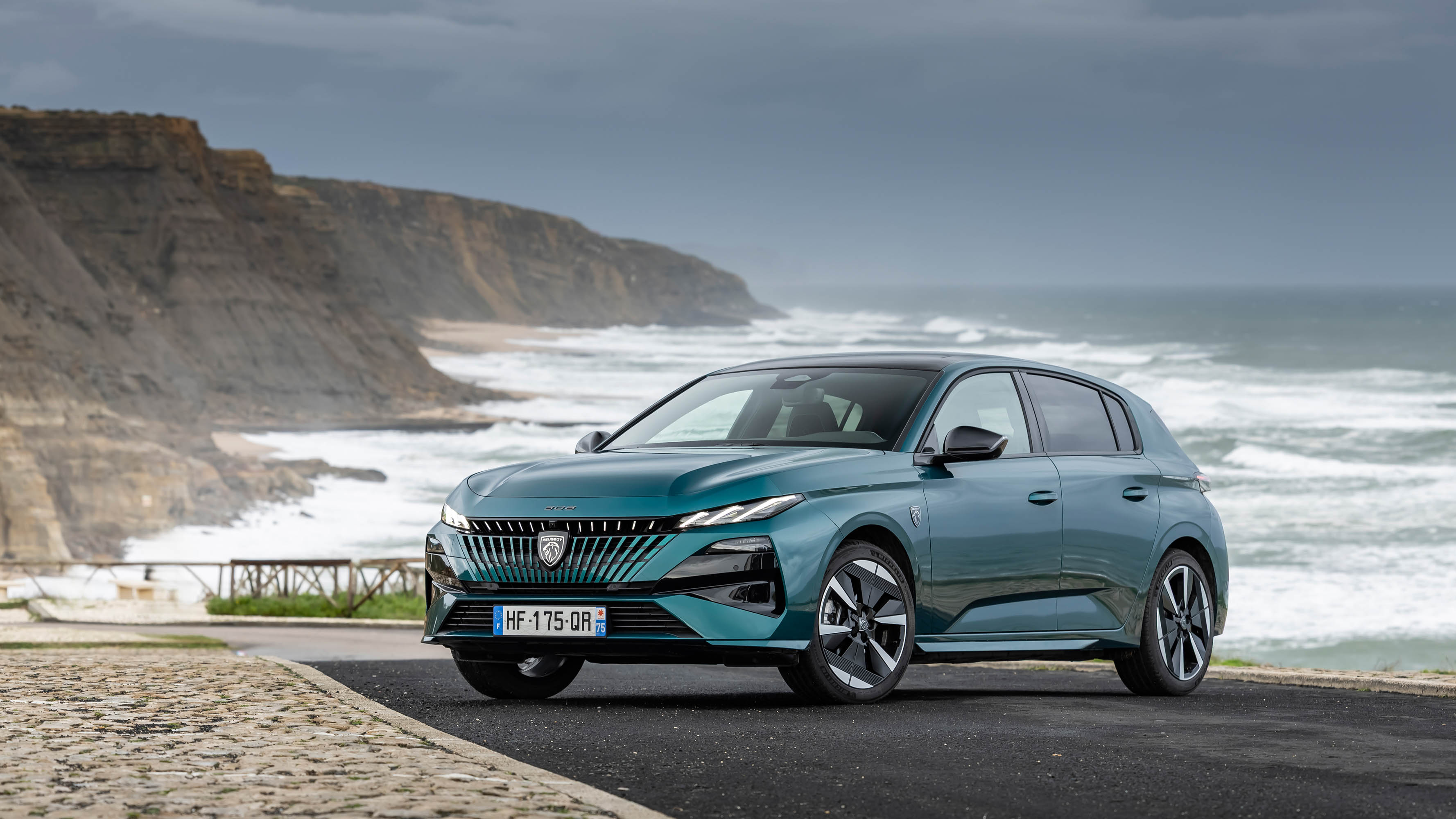
Interior
What is it like on the inside?
The interior is arguably among the strongest aspects of the E-308: it’s much fancier than you’ll remember from Peugeots of old and sits ahead of comparable electric rivals. Before, this was a £40k+ car, and it jolly well needed to feel fancy. Now it’s ten grand cheaper, it feels like damn good value in here. Though anyone coming from a crossover might feel lost in its sportier, lower-slung seat and you might fairly argue it’s a bit dark in here. Peugeot cribbing the moves of its premium German rivals a bit too closely, perhaps…
What’s the dashboard like?
Peugeot’s i-Cockpit layout has graduated nicely over the years, and it’s a long time since we’ve heard anyone grumble too much about the ‘small wheel, high dials’ setup. Go for a fancier trim line and those dials will have a 3D, hologram feel that’s gimmicky, yes, but rather fun too.
And the infotainment?
Peugeot has ploughed its own furrow with the ten-inch touchscreen infotainment setup – it takes a little effort to figure out and set up, but once you’ve put the work in it’ll be nicely configured for day-to-day life.
We like the physical buttons that control some of the more frequently used climate functions, and the i-Toggle strip that comes as standard on all E-308s is a smart compromise. It’s a little touchscreen strip beneath the main screen that offers five configurable shortcuts from options on the main screen. So you can set a shortcut to Apple CarPlay or a favourite radio station, which is useful.
Adjusting the air con or turning the heated seats on still means a bit of screen diving, mind, so it’s not quite there yet. Though entry-level Allure cars dodge that bullet.
What’s the space like?
The boot is smaller than a stock 308, but a match for the plug-in hybrid version at 361 litres with the rear seats up, 1,271 with them down.
It’s not hugely commodious for taller adults sat in the back, but it’ll compare well to anything below a Skoda Octavia and Stellantis’ clever portioning of the battery cells ensures the floor is of regular height. Plenty of EVs rob you of foot room beneath the front seats while angling your knees awkwardly as you sit in the back. Not this one.
Featured

Trending this week
- Car Review
BMW 1 Series
- Top Gear's Top 9
Nine dreadful bits of 'homeware' made by carmakers






